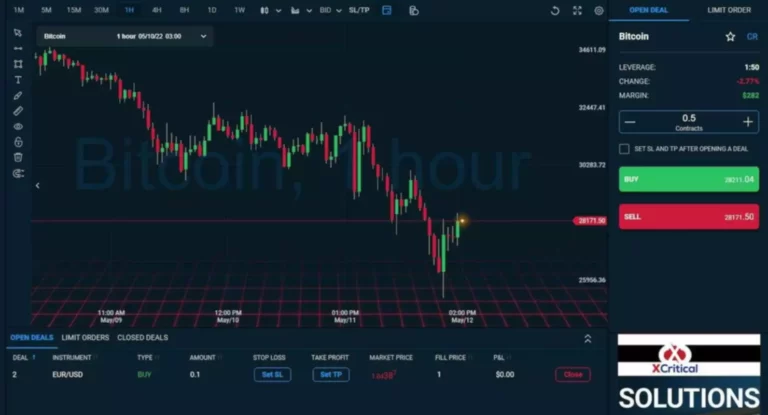Choosing the best DeFi liquidity pool can really feel like deciding on the proper ice cream taste. There’s plenty of options, however not every selection will fulfill your unique taste. Here’s a easy information to help you choose the best pool to dive into. Blockchain, in case you’re questioning, is the technology that powers cryptocurrencies like Bitcoin and Ethereum. It’s a type of digital ledger that keeps a document of all transactions and is decentralized—meaning, it’s not controlled by any single entity. Decentralized finance, or DeFi, is like the wild cousin of regular banking.
If there is a bug or some kind of exploit via a flash mortgage, for example, your funds could be lost eternally. Most liquidity swimming pools additionally present LP tokens, a type of receipt, which can later be exchanged for rewards from the pool—proportionate to the liquidity provided. Investors can sometimes stake LP tokens on different protocols to generate even more yields. Liquidity is a crucial problem in a decentralized digital asset panorama, and developers have provide you with some fairly ingenious and creative options. Educating your self on DeFi liquidity pools Cryptocurrency wallet and liquidity mining is like having a flashlight in your toolkit of exploring the subsequent period of finance.
The dimension of a person’s share within the pool is decided by how a lot of the underlying asset they have provided. A DEX is a decentralized exchange that doesn’t depend on a 3rd celebration to carry customers’ funds. DEXs require more liquidity than centralized exchanges (CEXs), however, as a result of they do not have the same mechanisms in place to match consumers and sellers. If you provide liquidity to an AMM, you’ll want to be aware of an idea referred to as impermanent loss.

Choosing one of the best defi liquidity pool platform that matches the user’s requirement is one simple possibility. Let’s glimpse at some of those components to consider earlier than selecting one of the best Defi liquidity pool in the subsequent part. These finest defi liquidity swimming pools and their factors concurrently present various advantages to the users.
To additional incentivize participation, DeFi platforms often implement yield farming programs. These applications provide extra rewards to LPs who lock their assets in particular swimming pools, often in the type of platform-native tokens. Yield farming not solely supplies LPs with greater returns but additionally helps DEXs preserve adequate liquidity.

As of December 2020, there are virtually 15 billion dollars of value locked in DeFi protocols. Unlike holding onto belongings, this kind of loss can end result in actual monetary loss and vary in magnitude. Conduct thorough analysis earlier than investing in double-sided liquidity pools to understand and mitigate this risk. Transactions inside liquidity swimming pools are smoother because of the constant updating of asset values by change rates. Lastly, this stability ensures fairer and more efficient buying and selling conditions.
What Are Liquidity Pools? The Funds That Keep Defi Working
Balancer permits for the creation of liquidity swimming pools with as a lot as eight assets with adjustable weights, offering extra flexibility than Uniswap. In this conventional model, a market maker creates markets by buying and promoting crypto directly from crypto merchants. In this context, liquidity refers again to the defi pools availability of a particular asset in the pool, allowing trades to occur without vital value slippage.
Read whitepapers, and evaluation the neighborhood help and former encounters. To get started on your liquidity pool journey, simply purchase crypto via MoonPay utilizing a card, cellular cost technique like Google Pay, or bank switch. By offering liquidity to DeFi platforms, you probably can earn curiosity and grow your crypto portfolio. If a pool would not have sufficient liquidity, it might expertise excessive slippage when trades are executed. Developers might have privileged access to the good contract code, similar to an executive code. It may enable them to govern https://www.xcritical.com/ or exploit the pool, doubtlessly resulting in the misappropriation of funds.
Eliminates Unfavorable Trading Circumstances

Some swimming pools would possibly offer you rewards in the form of interest, others may offer you a slice of the transaction charges, or even a mixture of both. Ethereum, for example, can process solely transactions per second, making it almost impossible to transfer order methods to decentralized solutions. To address this challenge, DEXs have developed crypto liquidity pools, which supply a more environment friendly on-chain solution for exchanging cryptocurrencies and tokens.
First things first, you want to decide which pool you want to join. This is about extra than simply choosing a pool that accepts your token sort. You additionally want to consider things just like the pool’s dimension, the buying and selling quantity, and the charges. But don’t be concerned, we’ll dig into how to decide on the right pool in a later part. Bitbond is the main asset tokenization platform and supports hundreds of users globally. For a foundational understanding of what is a liquidity pool and how it operates, discuss with our complete guide.
- In distinction, centralized exchanges rely on order guide systems to coordinate trades and guarantee prompt transactions.
- Read whitepapers, and evaluation the community assist and former encounters.
- Similar equivalents on BNB Chain are PancakeSwap, BakerySwap, and BurgerSwap, the place the swimming pools comprise BEP-20 tokens.
- This loss can happen if the asset price decreases and by no means recovers or when customers purchase from the pool at a cheaper price and sell elsewhere, leading to a permanent loss.
- No banks, no monetary institutions, nothing standing between you and your money—just you and the blockchain.
What’s The Difference Between Liquidity Pools And Liquidity Mining?
The dangers concerned in liquidity pools include vulnerabilities in good contracts that hackers can exploit. Plus, the high slippage because of low liquidity and impermanent loss for liquidity suppliers when the value of the underlying property fluctuates. DeFi activities corresponding to lending, borrowing, or token-swapping depend on good contracts—pieces of self-executing codes.
The precise amount earned by any liquidity supplier will depend on the size of the pool, the decentralized trading exercise, and the transaction charges which are charged. So not solely are customers earning from decentralized trading exercise in the pool, they’re additionally earning returns from staking the liquidity tokens they receive. Liquidity pools are at the heart of decentralized finance (DeFi) because peer-to-peer buying and selling isn’t possible without them. Below are a few explanation why liquidity pools play such an important position. One of the first protocols to use liquidity pools was Bancor, however the concept gained more consideration with the popularization of Uniswap. Some different popular exchanges that use liquidity swimming pools on Ethereum are SushiSwap, Curve, and Balancer.